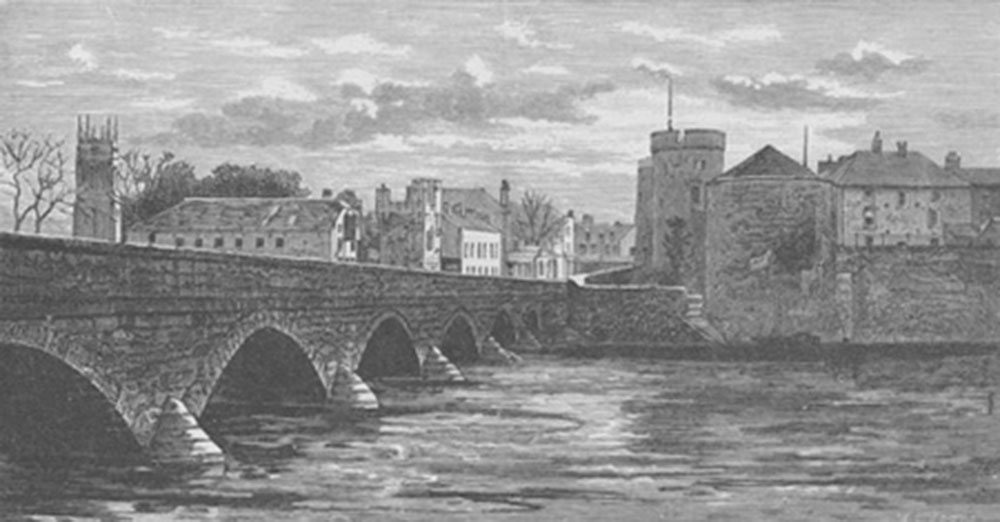Limerick - Irish Pictures (1888)
From Irish Pictures Drawn with Pen and Pencil (1888) by Richard Lovett
Chapter VI: The Shannon … continued
« Previous Page | Start of Chapter | Book Contents | Next Page »
Soon after leaving Castle Connell, Limerick is reached, by far the most important city on the Shannon, one of the important centres of trade in Ireland, and a place that has been prominent in some of the most stirring episodes in history. It was founded by the Danes in the ninth century. From them it passed under the sway of the family of Brian Boru, thus attaining to the dignity of the royal city of Munster. It then fell into the hands of the Thomond kings, who ruled it during the twelfth century. King John erected a strong castle there; it was often besieged in the thirteenth and fourteenth centuries. Elizabeth made it a centre of administration; Ireton captured it in 1651; in the Stuart struggle it held with James II., and having been unsuccessfully assaulted by William III. in 1690, in 1691 it capitulated under the treaty which led to a series of events the memory of which has given Limerick the name of the ' City of the Violated Treaty.'
Limerick is finely situated upon both banks of the Shannon and upon King's Island, which is formed by the Abbey River. It is divided into three main districts; English Town, which occupies the island, Irish Town, which lies to the south of the island—these two constituting the 'Old Town'—and Newtown Pery, the chief business and residential districts of to-day. From the peculiarities of its situation, Limerick is rich in bridges. Three cross the Shannon, two of them being handsome structures. One, the Athlunkard Bridge, is hardly within the town. It crosses a beautiful reach of the river above the city, and carries the Killaloe Road. The Wellesley Bridge, connecting Newtown Pery with the road from Ennis, is a fine specimen of modern engineering, and consists of five arches, with a swivel on the city side. Higher up the river is Thomond Bridge, rebuilt in 1839, which stands on the site of the ancient bridge, and was the scene of many important events in the past history of the city. Few towns in the United Kingdom can exhibit such large structures so finely placed as these two bridges.
« Previous Page | Start of Chapter | Book Contents | Next Page »

